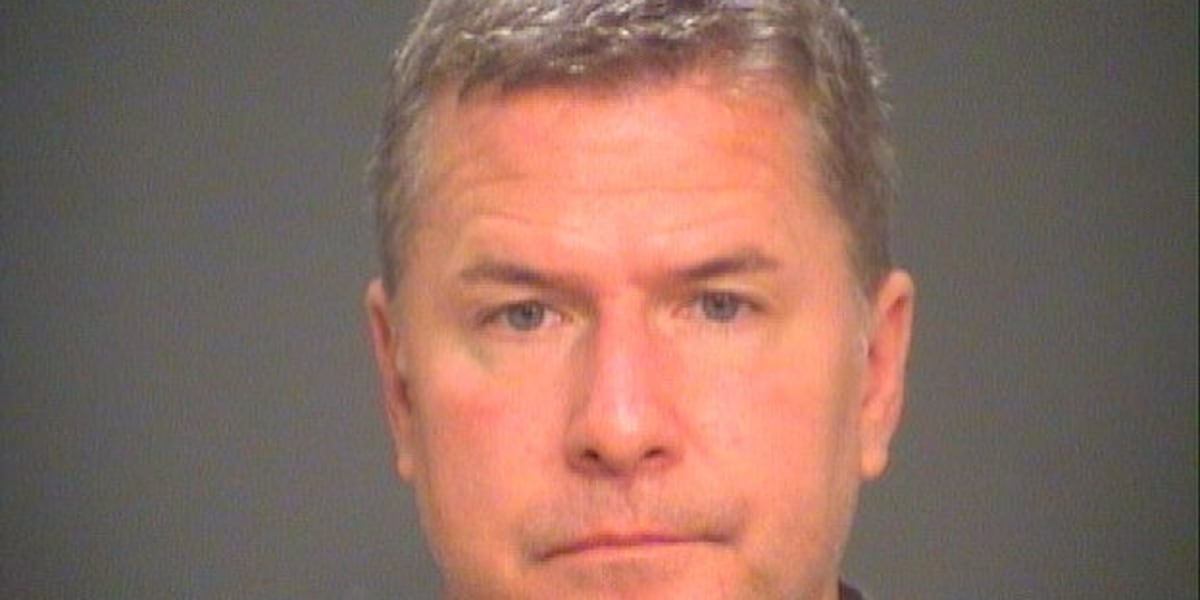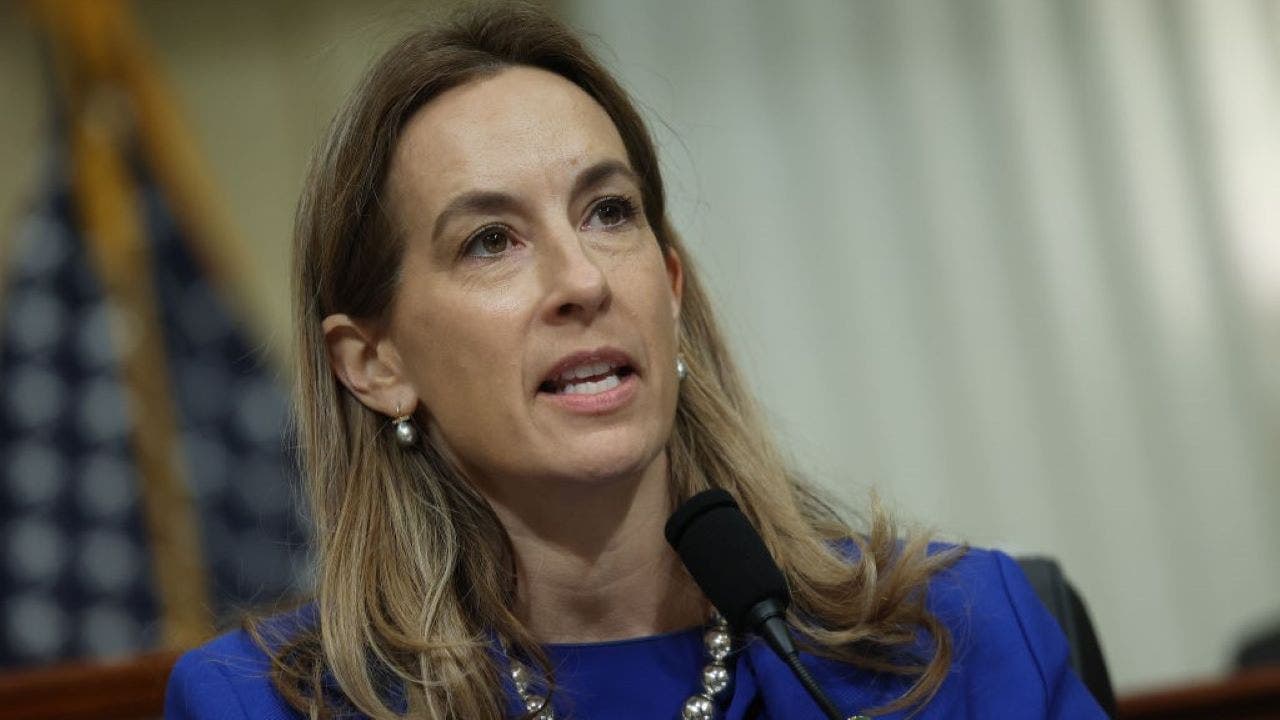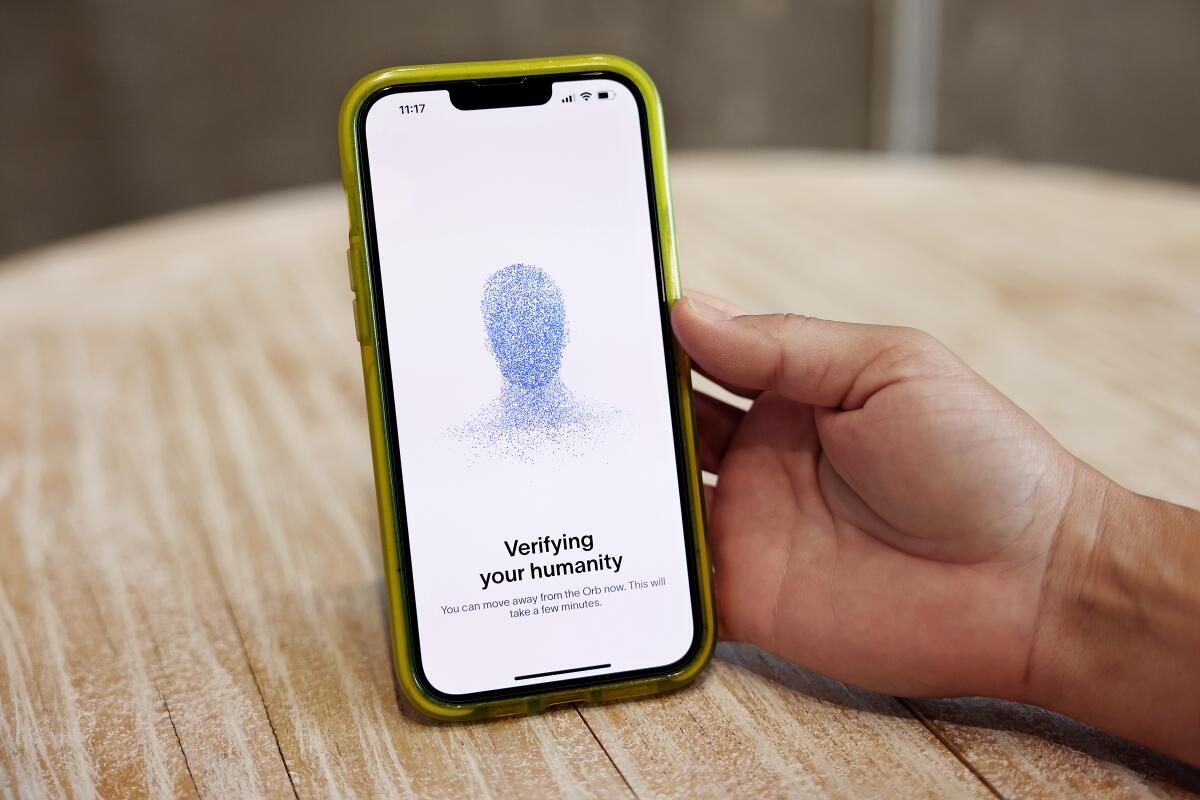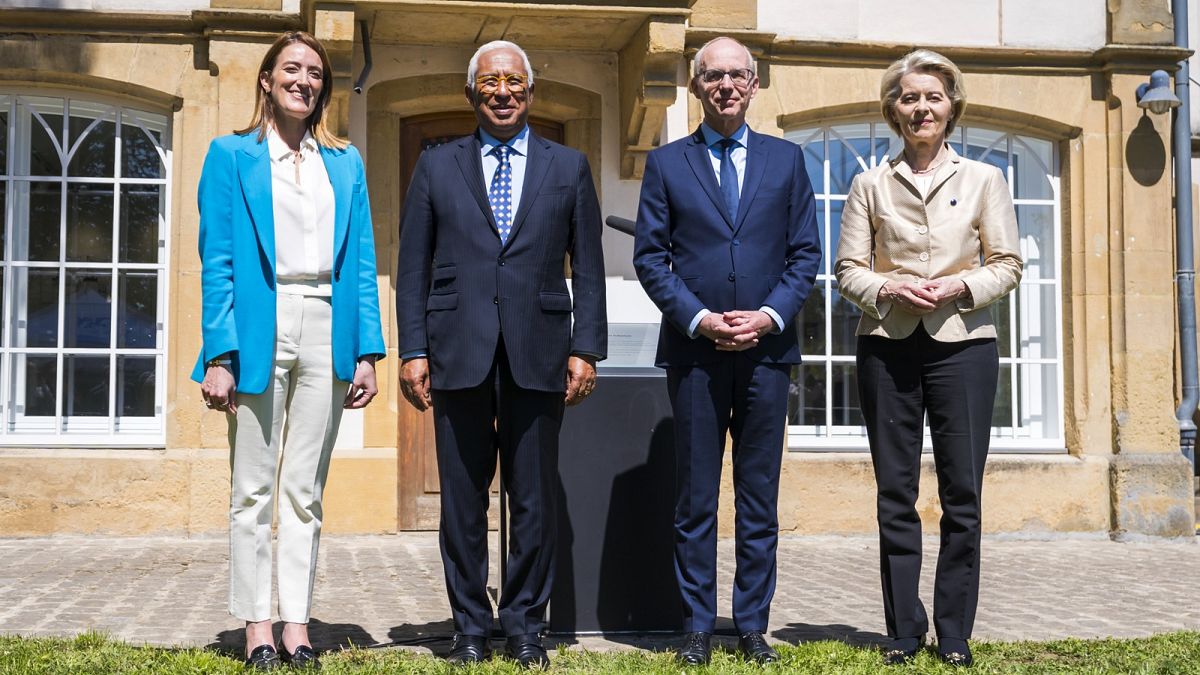Business
Does It Help to Know How Much the Boss Makes?

In 1933, the U.S. government asked 2,000 corporations listed on stock exchanges in New York to disclose how much they paid their top bosses — its first effort at making the pay of executives more visible. The idea was to encourage the “more conservative management of industry,” The New York Times reported when it published some of the results on its front page.
But this new publicity did not temper pay. Instead, according to a study by Alexandre Mas, a Princeton economist, the opposite happened: Average chief executive compensation rose, mostly because the lower-paid executives — now realizing that they were, indeed, lower-paid — pushed for raises that brought their compensation in line with their higher-paid peers’.
Nonetheless, the belief that revealing chief executive pay would help keep executive compensation in check stuck around, and got more complex. In 2018, the Securities and Exchange Commission required companies to publish not only executive pay, but also a ratio that describes how the pay of a company’s leader compared with the pay of its median worker.
This new take on pay transparency has been at least as ineffective at moderating chief executive pay as the 1933 version: Last year, the median pay for chief executives who were in their jobs for at least two years was $14.8 million, or 186 times the median employee’s pay, according to Equilar, which collects corporate leadership data.
One reason it may not have started a revolution? Employees already understood that executives were paid exorbitantly and how their own paycheck compared with that.
The people who learned the most were not people working at the companies, but outside observers. “It was news to investors because investors didn’t have their own pay to make a ratio of,” said Lisa LaViers, an assistant professor at Tulane University’s Freeman School of Business who has studied how disclosing the pay gap affects workers. But, she said, “This is not informative in the same way to employees.”
The gap between worker and chief executive pay may also not tell employees much about how fairly they’re being paid, said Ethan Rouen, an assistant professor at Harvard Business School whose paper published by The Accounting Review concluded that the ratio wasn’t a good proxy for fairness throughout a company.
Mr. Rouen’s study looked at how companies’ performance related to the ratio of pay between median workers and the company’s leader.
There are two schools of thought when it comes to how workers understand their pay in relation to that of their bosses. One, known as Tournament Theory, suggests that when pay is fair, workers will be motivated to put in more effort if there is more disparity, which means a bigger prize for climbing the corporate ladder. The other, known as Equity Theory, suggests that pay gaps perceived as unfair build resentment and lead to poorer performance. Both theories suggest that if pay is fair, workers should be better at their jobs.
If the ratio of worker pay to chief executive pay were a good indicator of fairness throughout the company, Mr. Rouen would have expected to see that firms with lower ratios performed better. Instead, he saw no significant difference between them.
He did, however, find a relationship based on whether the pay of both workers and executives was set fairly. Those with fairer pay, as determined by economic factors examined by Mr. Rouen, performed better.
For employees, the part of the ratio that gets less attention — median worker pay — may be more important than seeing what the top boss makes, Ms. LaViers said.
In a recent working paper, she and co-authors Mary Ellen Carter at Boston College, Jason Sandvik at The University of Arizona and Da Xu at Tsinghua University used data from the employer review site Glassdoor to analyze how employees responded when the requirement for companies to disclose the ratio of chief executive to worker pay first went into effect.
They found that worker satisfaction with pay improved, most likely because workers tend to overestimate how much their peers make. In other words, they’d expected median pay to be higher, and their own salary to fall lower in the hierarchy.
“The accurate number may have been lower,” Ms. LaViers said. “And so as a result, they were happier with their own pay.”
What matters most to employees seems to be not what company leaders make, but whether they believe that it — and their own pay — is fair.
The S.E.C. has tried to add some context about fairness to executive pay disclosures with a requirement to show financial performance for up to five years alongside pay information that goes into effect this year.
Some researchers and investors argue fairness may be better gauged with more information about employees, rather than about executives.
Last year, a group of law and accounting professors, including Mr. Rouen, sent a letter to the S.E.C. proposing more disclosures about investments in labor, including their total compensation, turnover numbers and how many workers are employees or contractors.
“Investors absolutely care about how or about the quality of the workplace,” said Cambria Allen-Ratzlaff, the co-chair of a coalition of investment managers that pushes for these disclosures.
Focusing on more transparency about rank-and-file pay may also better serve the goal of reducing inequality, Mr. Rouen said. Chief executive pay is not necessarily the problem, he argues. “It’s the fact that wages have remained stagnant, that worker power has diminished over time, that the federal minimum wage has remained at $7.25” since 2009.
“It boggles my mind,” he said, “that we spend so much time disclosing information about C.E.O. pay and so little about the employee pay.”

Business
Sam Altman's eye-scanning orbs have arrived, sparking curiosity and fear

SAN FRANCISCO — Earlier this month, a mysterious store selling a vision of the future opened its doors in downtown San Francisco’s Union Square district.
A cryptic message appeared on the storefront window: “World is the real human network. Anonymous proof of human and universally inclusive finance for the age of AI. Millions of humans in over 160 countries. Now available in the USA.”
The store attracted a small crowd and curious onlookers. People took turns scanning their eyes by peering into white devices known as orbs — to prove they are human. Then they received, free of charge, a verified World ID they could use to log into online services and apps. As an extra bonus, participants were given some Worldcoin cryptocurrency tokens.
Some just observed from a distance.
“I’m afraid to walk inside,” said Brian Klein, 66, as he peered into the window on his way to the theater. “I don’t want that thing taking any of my data and biometric scanning me.”
The futuristic technology is the creation of a startup called Tools for Humanity, which is based in San Francisco and Munich, Germany. Founded in 2019 by Alex Blania and Sam Altman — the entrepreneur known for OpenAI’s ChatGPT — the tech company says it’s “building for humans in the age of AI.”
In theory, these iris scans offer a safe and convenient way for consumers to verify their human identity at a time when AI-powered tools can easily create fake audio and images of people.
“We wanted a way to make sure that humans stayed special and essential in a world where the internet was going to have lots of AI-driven content,” said Altman, the chairman for Tools for Humanity, at a glitzy event in San Francisco last month.
Like the early stages of Facebook and PayPal, World is still in a growth phase, trying to lure enough customers to its network to eventually build a viable service.
A chief draw, World says, is that people can verify their humanness at an orb without providing personal information, such as, their names, emails, phone numbers and social media profiles.
But some are skeptical, contending that handing over biometric data is too risky. They cite instances where companies have reported data breaches or filed for bankruptcy, such as DNA research firm 23andMe.
“You can’t get new eyeballs. I don’t care what this company says. Biometric data like these retinal scans will get out. Hacks and leaks happen all the time,” said Justin Kloczko, a tech and privacy advocate at Consumer Watchdog. “Your eyeballs are going to be like gold to these thieves.”
1. An orb. 2. Frankie Reina, of West Hollywood, gets an eye scan. 3. A woman is reflected in an orb while getting an eye scan. 4. Frankie Reina waits to be verified after getting an eye scan. (Christina House / Los Angeles Times)
World has been making waves in Asia, Europe, South America and Central America. More than 12 million people have verified themselves through the orbs and roughly 26 million have downloaded the World app, where people store their World ID, digital assets and access other tools, the company says.
Now, World is setting its sights on the United States. The World app says people can claim up to 39 Worldcoin tokens, worth up to $45.49 if a user verifies they’re human with an orb.
World plans to deploy 7,500 orbs throughout the U.S. this year. It’s opening up spaces where people can scan their eyes in six cities — Los Angeles, San Francisco, Atlanta, Austin, Miami and Nashville. The L.A. space opened on Melrose Avenue last week.
Backed by well-known venture capital firms including Bain Capital, Menlo Ventures, Khosla Ventures and Andreessen Horowitz, Tools for Humanity has raised $240 million, as of March, according to Pitchbook.
The crypto eye-scanning project has stirred up plenty of buzz, but also controversy.
In places outside the United States, including Hong Kong, Spain, Portugal, Indonesia, South Korea, and Kenya, regulators have scrutinized the effort because of data privacy concerns.
Whistleblower Edward Snowden, who leaked classified details of the U.S. government’s mass surveillance program, responded to Altman’s post about the project in 2021 by saying “the human body is not a ticket-punch.”
Ashkan Soltani, the former executive director of the California Privacy Protection Agency, said that privacy risks can outweigh the benefits of handing over biometric data.
“Even if companies don’t store raw biometric data, like retina scans, the derived identifiers are immutable … and permanently linked to the individuals they were captured from,” he said in an email.
World executives counter that the orb captures photos of a person’s face and eyes, but doesn’t store any of that data. To receive a verified World ID, people can choose to send their iris image to their phone and that data are encrypted, meaning that the company can’t view or access the information.

Frankie Reina, of West Hollywood, left, gets an eye scan with the help of Myra Vides, center.
(Christina House / Los Angeles Times)
The idea for World began five years ago. Before the popularity of ChatGPT ignited an AI frenzy, Altman was on a walk with Blania in San Francisco talking about how trust would work in the age where AI systems are smarter than humans.
“The initial ideas were very crazy, then we came down to one that was just a little bit crazy, which became World,” Altman said onstage at an event about World’s U.S. debut at Fort Mason, a former U.S. Army post in San Francisco.
At the event, tech workers, influencers and even California Gov. Gavin Newsom and San Francisco Mayor Daniel Lurie wandered in and out of a large building filled with orbs, refreshments and entertainment.
Tools for Humanity Chief Executive Blania highlighted three ways people could use their verified World ID: gaming, dating and social media.
Currently, online services use a variety of ways to confirm people’s identities including video selfies, phone numbers, government-issued IDs and two-factor authentication.
World recently teamed up with gaming company Razer, based in Irvine and Singapore, to verify customers are human through a single-sign on, and is placing orbs in Razer stores.
Blania also touted a partnership with Match Group, where people can used World to verify themselves and their ages on apps such as Tinder , an effort that will be tested in Japan.
“We think the internet as a whole will need a proof of human and one space that I’m personally most excited about will be social,” Blania said at the San Francisco event.

Alex Blania, the chief executive of Tools for Humanity, speaks onstage during an event for the U.S. launch of World at Fort Mason Center on April 30 in San Francisco.
(Kimberly White / Getty Images for World)
Back at the World store in San Francisco, Zachary Sussman was eager to check out the orbs with his two friends, both in their 20s.
“For me, the more ‘Black Mirror’ the technology is, the more likely I am to use it,” Sussman said, referring to the popular Netflix sci-fi series. “I like the dystopian aesthetic.”
Doug Colaizzo, 35, checked out the store with his daughter and parents. Colaizzo, a developer, described himself as an “early adopter” of technology. He already uses his fingerprint to unlock his front door and his smartphone to pay for items.
“We need a better way of identifying humans,” he said. “I support this idea, even if this is not gonna be the one that wins.”
Andras Cser, vice president and principal analyst of Security and Risk Management at Forrester Research, said the fact that people have to go to a store to scan their eyes could limit adoption.
World is building a gadget called the “mini Orb” that’s the size of a smartphone, but convincing people to carry a separate device around will also be an uphill battle, he said.
“There’s big time hype with a ton of customer friction and privacy problems,” he said.
The company will have to convince skeptics like Klein to hand over their biometric data. The San Francisco resident is more cautious, especially after he had to delete his DNA data from 23andMe because the biotech company filed for bankruptcy.
“I’m not going to go off and live in the wilderness by myself,” he said. “Eventually, I might have to, but I’m going to resist as much as I can.”
Business
130,000 Igloo Coolers Recalled After Fingertip Amputations From Handle

About 130,000 Igloo coolers were recalled on Thursday after consumers reported 78 fingertip injuries from the cooler’s tow handle, 26 of which led to fingertip amputations, bone fractures or cuts, according to the U.S. Consumer Product Safety Commission.
This warning expands an initial recall issued in February of more than one million 90-quart Igloo Flip & Tow Rolling Coolers because the tow handle was crushing and seriously injuring people’s fingertips.
“The tow handle can pinch consumers’ fingertips against the cooler, posing fingertip amputation and crushing hazard,” the recall said.
In the February recall, the safety commission said that Igloo had received 12 reports of fingertip injuries from the coolers. Since then there have been an additional 78 reports, according to the commission.
The recalled coolers, all of which have the word “IGLOO” on the side of them, were manufactured before January 2024 and come in different colors. The manufacture date can be found on the bottom of the cooler.
The commission said the latest recall also affected about 20,000 coolers in Canada and 5,900 in Mexico, which is in addition to the tens of thousands recalled from each country in February.
Igloo said that owners who bought the coolers between January 2019 and January 2025 should stop using them and contact the company for a free replacement handle.
The company said in a statement that it stood behind the quality of its products and that consumer “safety and satisfaction” were its top priorities.
The coolers were sold at Academy, Costco, Dick’s, Target and other retailers and online stores and were usually priced between $80 and $140.
Business
Insurance commissioner signals possible probe into State Farm's handling of L.A. wildfire claims

After fielding a storm of complaints at a community meeting about how State Farm General is handling Los Angeles wildfire claims, California Insurance Commissioner Ricardo Lara said Saturday that regulators might launch a formal inquiry into the company’s practices.
Lara made his comments during a Zoom session attended by more 200 survivors of the Palisades and Eaton fires, who complained about delays in handling their claims, difficulty in getting testing for toxic substances and low cash offers to fix damaged homes and replace those destroyed.
“It’s not off the table,” said Lara, referring to the department’s authority to conduct what is called a “market conduct” exam into the company’s response to the fires. “We are not necessarily opposed to that.”
The department has previously conducted such investigations following other large fires.
The Zoom session was organized by the Pali Strong community group, which was formed by Pacific Palisades residents after the Jan. 7 fires.
State Farm, on Sunday, said in response that it has the largest claims force in the industry and it is “focused on our customers and helping them recover from the largest fire event we have ever experienced in the state.”
“We actively work with each of our customers to resolve their claim by understanding the facts of their loss, identifying the damages and applicable coverage,” the statement said.
The company said that as of May 5 it had received more than 12,600 claims and paid more than $3.4 billion to customers.
Separately, Tony Cignarale, deputy commissioner of consumer services and market conduct, told the fire victims that the department sent the California FAIR Plan Assn. a letter last week seeking information into how the insurer of last resort is handling smoke damage claims.
The FAIR Plan was sued last month by policyholders in both fire zones, who allege the state’s insurer is refusing to properly investigate and pay for smoke damage as required by state law. Also named as defendants are State Farm and other California licensed home insurers, who run the plan.
The threat to conduct a market conduct exam into State Farm General’s claims handling practices comes as California’s largest home insurer awaits a decision on its request for an emergency rate hike in response to its losses from the Jan. 7 fires.
The company originally filed for a 22% rate hike for its homeowner policies, but trimmed that down to 17% during a hearing last month before an administrative law judge.
The judge is expected to make a recommendation as early as this week to Lara, who can then accept, reject or revise the ruling. It also could be sent back for reconsideration.
Joy Chen, whose Altadena home was damaged by soot and ash, asked Lara to defer granting the company any rate hike until he “fully” investigates the complaints.
“We’d be happy to submit them to you,” said Chen, a leader of the Eaton Fire Survivors Network.
Lara said that he could not tie any investigation into the complaints to consideration of the rate hike, which he said was a “separate judicial process that is currently underway.” However, he asked the fire survivors to submit all their complaints to the department so it could examine them.
“What I commit to doing is collecting all the data that I’m going to receive … and sending it to our law enforcement team, because I really want to look at … all the allegations that were talked about today,” he said.
Chen, who said her home was effectively remediated by her insurer, USAA, later told The Times, “Lara’s most important job is to protect California families but he is saying the department does not consider claims management when approving rate hikes — but this is one of the few legal powers he actually has to regulate the industry.”
Last week, the Los Angeles County Department of Public Health announced it found high levels of lead and other toxic metals at homes destroyed by the wildfires whose topsoil had been scraped by the U.S. Army Corps of Engineers, particularly in the Altadena area with its older housing stock.
In regards to the FAIR Plan, Cignarale said the department’s letter to the insurer asked them “for very specific information as to the very steps that are being taken to resolve these smoke claims.”
Lara told the fire victims that he had issued a bulletin to state insurers in March stating that the department expected them to “fully investigate and pay legitimate smoke claims.” He said if that was not happening, fire victims should submit their complaints to the state so the department’s investigative unit could look into them.
He also said the department planned to convene health experts to develop state standards for smoke damage remediation. “Absent any set standards, then the insurance companies will do anything to get you back in your home as quickly as possible,” he said.
The FAIR Plan did not immediately respond to a request for comment.
-

 Cleveland, OH1 week ago
Cleveland, OH1 week agoWho is Gregory Moore? Former divorce attorney charged for murder of Aliza Sherman in downtown Cleveland
-

 News1 week ago
News1 week agoU.S. and China Dig In on Trade War, With No Plans for Formal Talks
-

 Politics1 week ago
Politics1 week agoTrump posts AI image of himself as Pope amid Vatican's search for new pontiff
-

 Politics1 week ago
Politics1 week agoRep. Mikie Sherrill suggests third Trump impeachment as she campaigns to be next New Jersey governor
-

 News1 week ago
News1 week agoFamily statement: Rodney Hinton Jr. walked out of body camera footage meeting with CPD prior to officer death
-

 News1 week ago
News1 week agoAre Politicians Too Old? California Democrats Want to Debate an Age Cap.
-

 World1 week ago
World1 week ago‘Don’t see a major war with India, but have to be ready’: Pakistan ex-NSA
-

 Politics1 week ago
Politics1 week agoAOC draws spotlight with Queens town hall as 2028 White House talk swirls

















